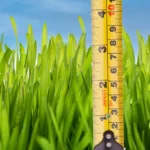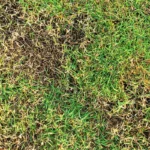Helpful Tips
Common Lawn Issues - Part 2
There are many things that can be problematic when trying to maintain a beautiful healthy lawn. Despite regular treatment and your best efforts, pests and disease brought on by inadequate or overwatering are two of the main reasons a lawn can suffer. Part one of our Common Lawn Issues reviewed signs you may have a watering issue. Here in part two we discuss some of the most common pests in our area and what to look for.

COMMON TURF PESTS
CHINCH BUGS
Chinch bugs are usually active year-round in Florida, except for the colder winter months. They are attracted to dry areas but can affect any lawn. Sometimes during treatment we will treat dry areas where we don’t find active or present chinch bugs simply as a preventative measure. If we do find active chinch bugs, we will set a follow-up for one or two weeks to come back and ensure that they are no longer active.
SOD WEBWORMS
Sod webworms are usually active in the late summer months. Unlike the name indicates, sod webworms do not make webs. They are worms that eat the blades of grass, and the areas they affect usually look like they have been cut short by a weed eater, later visible as a brown area. The damage they cause is not permanent and will grow out after treatment. The adult form of the sod webworm is a light-colored moth, and they are usually seen flying just above the lawn. Every lawn gets moths, but not every lawn is affected by sod webworms. The moths themselves do not affect the lawn; they can lay eggs in the lawn that hatch into the sod webworm. There is no treatment that can be done to eradicate the moths, but we do treat with a product that prevents the eggs from hatching into the sod webworm. Please note: if we try to just spray the moths, more will fly right back in since they are airborne.
LARGE PATCH FUNGUS
As with most fungal diseases, moisture is a primary contributing factor to Large Patch which is caused by spores in your soil that become active when the correct conditions are met. Excessive irrigation, rainfall, and high humidity contribute, but homeowners can only control their own lawn management practices. This fungus should only be treated as it arises, as there is no effective way to pre-treat for it. Large Patch is very common in the winter months, and it is usually described as a brown area with a yellow/orange ring around it. The orange area around the perimeter of the diseased turf indicates that the fungus is active. Once treated, the fungus should go into dormancy upon which homeowners should expect the orange area to turn brown. If the temperatures and conditions that cause Large Patch Fungus in the lawn persist then it can become active and turn orange again even after treatment and dormancy. At this point we ask customers to call so we can schedule a re-treatment of the infected area.
It is important to note: areas affected by fungus may look dead because they are brown, but they will almost always grow out. This means that if a lawn is affected by fungus during the dormant season, it will remain brown until the spring when the lawn comes out of dormancy and starts to grow again. It is also worth noting that soil-based problems tend to occur in the same areas each year.
GRAY LEAF SPOT
Gray leaf spot is caused by mowing with a dull blade, improper watering, or any type of stress to the lawn. It’s usually self-inflicted, but is generally not detrimental to the lawn’s health.




